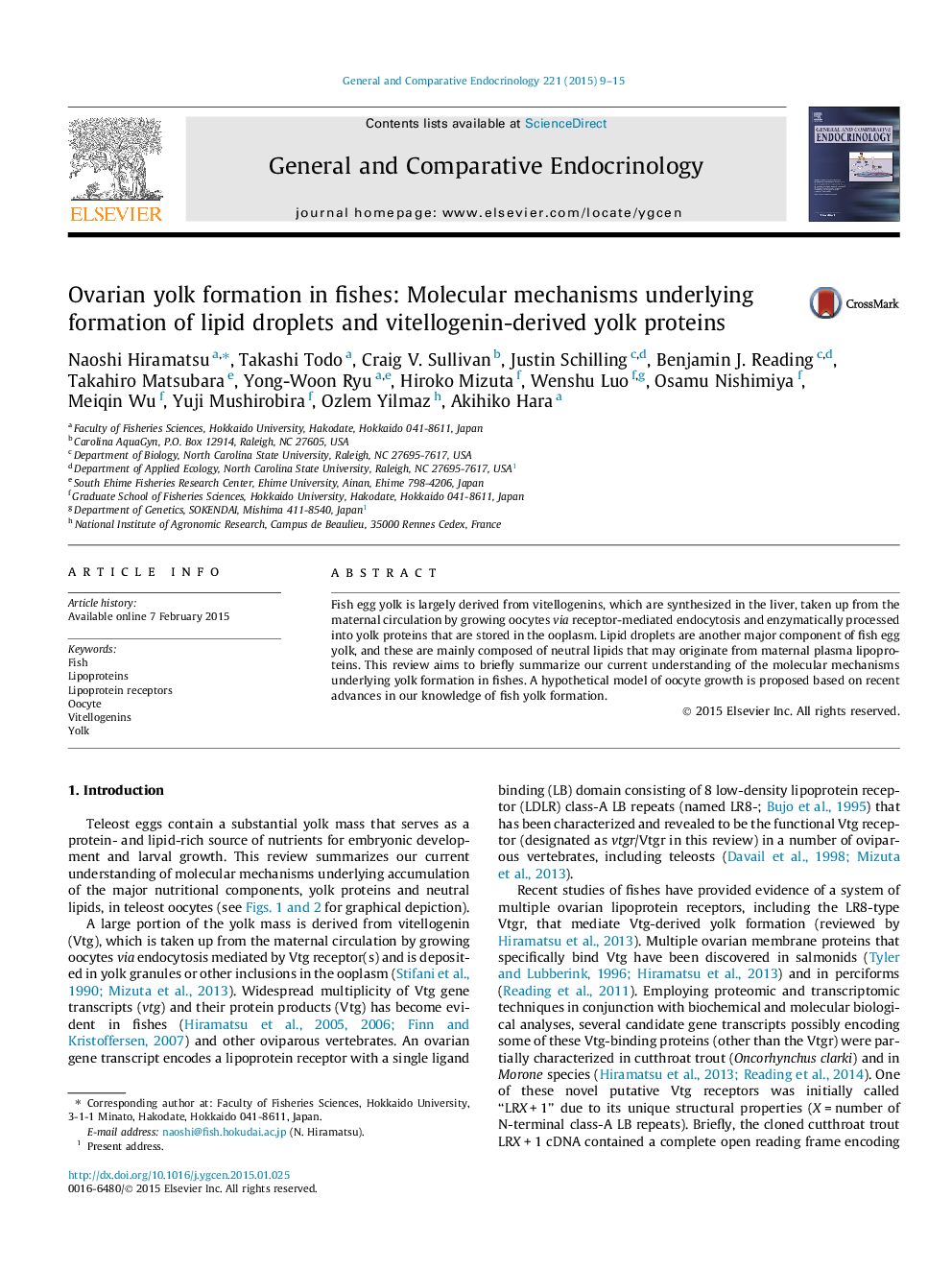| Article ID | Journal | Published Year | Pages | File Type |
|---|---|---|---|---|
| 2799901 | General and Comparative Endocrinology | 2015 | 7 Pages |
•Molecular mechanisms underlying yolk formation in fishes were reviewed.•Current understanding of the vitellogenesis was summarized (1st part).•Current understanding of the oocyte lipid formation was summarized (2nd part).
Fish egg yolk is largely derived from vitellogenins, which are synthesized in the liver, taken up from the maternal circulation by growing oocytes via receptor-mediated endocytosis and enzymatically processed into yolk proteins that are stored in the ooplasm. Lipid droplets are another major component of fish egg yolk, and these are mainly composed of neutral lipids that may originate from maternal plasma lipoproteins. This review aims to briefly summarize our current understanding of the molecular mechanisms underlying yolk formation in fishes. A hypothetical model of oocyte growth is proposed based on recent advances in our knowledge of fish yolk formation.
